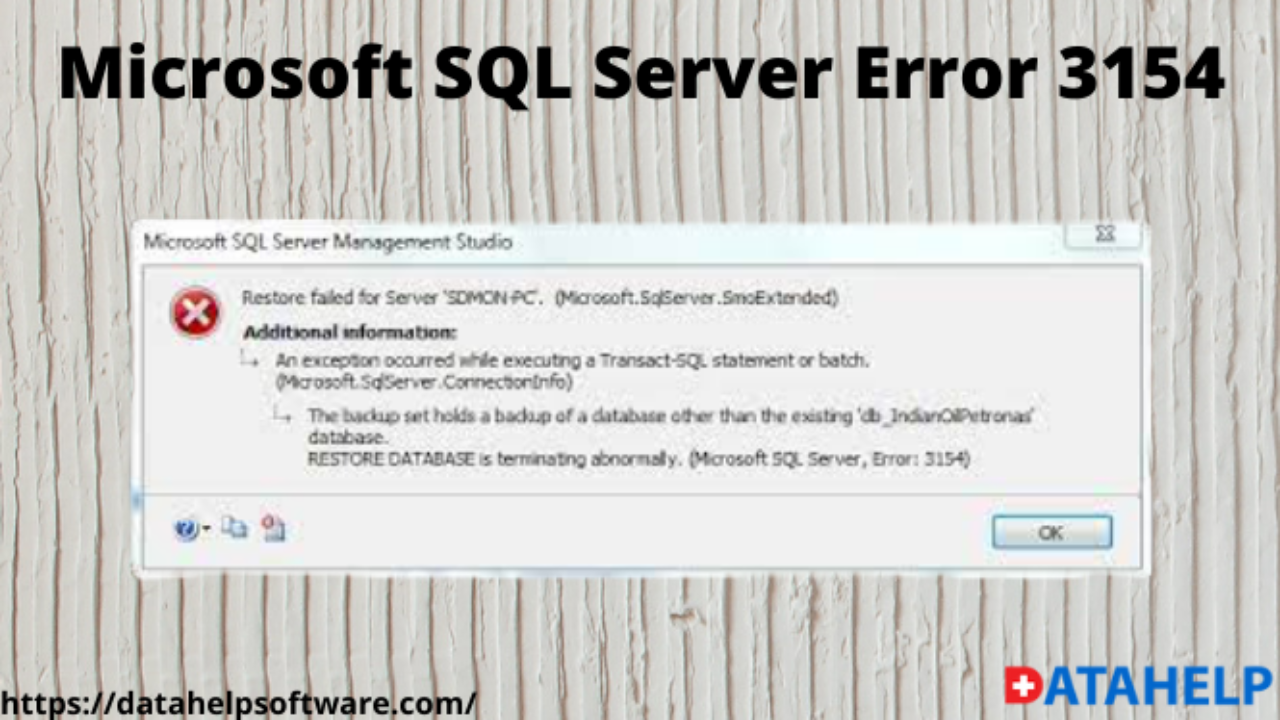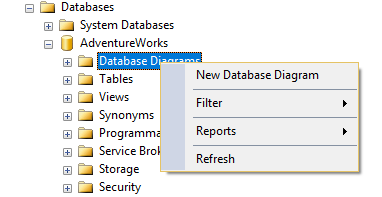
- ERROR MESSAGES SQL SERVER MANAGEMENT STUDIO TUTORIAL FULL
- ERROR MESSAGES SQL SERVER MANAGEMENT STUDIO TUTORIAL CODE
- ERROR MESSAGES SQL SERVER MANAGEMENT STUDIO TUTORIAL WINDOWS
TO FILE (FILEPATH = 'D:\Program Files\Microsoft SQL Server\MSSQL12. Here's the script for the AUDIT alone the error occurs when trying to activate the audit.
ERROR MESSAGES SQL SERVER MANAGEMENT STUDIO TUTORIAL FULL
The file path I selected is a subdirectory of the database's log folder, and the service has full rights by inheritance, so it should have no problem reading or writing. Also, according to another question, if that was the case it should be mentioned in the error log.

It's possible that the service account doesn't have privs to write to the system event log, but I've also tried setting up my audit to use the application log or a folder, and there's been no change.

There's a joke in here somewhere about ring buffers and going in circles. In all other cases, it will throw a lot of errors or not display anything at all. Note that the script will only work for a SSIS package job step that uses the SSIS catalog as the source. C:\Program Files (x86)\Microsoft SQL Server Management Studio 18\Common7\IDE\Ssms.exe. Executes the script, in case the SSISDB database that contains the package is on the same server as the SQL Server Agent job. In the Properties window, we need to go to the Debug tab and change the 'Start external program' property to. You can also query sys.dm_os_ring_buffers where ring_buffer_type = 'RING_BUFFER_XE_LOG'. To fix this, we need to go to our project’s properties by right-clicking on it in the Solution Explorer and selecting Properties. For more information, see the SQL Server error log.
ERROR MESSAGES SQL SERVER MANAGEMENT STUDIO TUTORIAL CODE
Without a filter, I get an XML message, with these salient points: Record type: RING_BUFFER_EXCEPTIONĪccording to sysmessages, this error code means: Audit '%.*ls' failed to %.*ls. Well, there are a couple hundred messages, but none are new and there's no change after each attempt to start auditing. OK, how about that dm_os_ring_buffers table? When filtered for the ring_buffer_type mentioned in the original error, I get nothing. The 65552 number is just an auto-incrementing value, not an error code. You can also query sys.dm_os_ring_buffers where ring_buffer_type = 'RING_BUFFER_XE_LOG'.Ĭhecking the error log, I see: Audit: Server Audit: 65552, Initialized and Assigned State: START_FAILED I've created an AUDIT and an associated AUDIT SPECIFICATION, but when I try to enable the audit, I get this message: Msg 33222, Level 16, State 1, Line 13Īudit 'X' failed to start. I'm setting up auditing on my MS SQL 2014 server. This allows you to connect to and manage your SQL Server from a graphical interface instead of having to use the command line. There won’t be the error message this time.Where can I get information about the audit process failing to start? SQL Server Management Studio is a workstation componentclient tool that will be installed if we select workstation component in installation steps.
ERROR MESSAGES SQL SERVER MANAGEMENT STUDIO TUTORIAL WINDOWS
The other solution, you can disable UAC on Windows but I don’t recommend it since it will lower your security system. You will see the step-by-step guide to use elevated command prompt to execute the installer file on the section below. Otherwise, you can use the command prompt at C:\Windows\System32\cmd.exe. If you are using 64-bit Windows, you should use the command prompt at C:\Windows\SysWOW64\cmd.exe instead. To solve this problem, you have to re-run the installer again using elevated command prompt by run the command prompt as administrator and execute the installer in there. This error message relates with permission issue (UAC) on Windows Vista and Windows 7.

This may indicate a problem with this package. The installer has encountered an unexpected error installing this package. When you are installing Microsoft SQL Server Management Studio Express on Windows Vista or Windows 7, you may receive this error message:


 0 kommentar(er)
0 kommentar(er)
